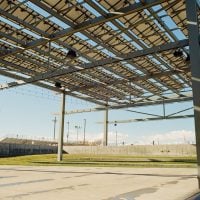The Pacific region, characterized by its stunning biodiversity and unique ecosystems, faces significant environmental challenges, including climate change, rising sea levels, and resource depletion. In response to these pressing issues, green technology has emerged as a beacon of hope, offering innovative solutions that promote sustainability and environmental stewardship. Green technology encompasses a wide range of practices and products designed to minimize environmental impact while enhancing economic growth.
From renewable energy sources like solar and wind power to sustainable agriculture and waste management systems, the potential for green technology to transform the Pacific is immense. As the Pacific Islands grapple with the dual threats of climate change and economic vulnerability, the adoption of green technology becomes not just an option but a necessity. The region’s reliance on natural resources for livelihoods makes it imperative to find sustainable alternatives that can withstand the pressures of a changing climate.
By harnessing green technology, Pacific nations can not only mitigate environmental degradation but also create resilient economies that empower local communities. This article delves into the role of donors in funding green technology initiatives, the impact of these technologies on the environment, and the collaborative efforts needed to ensure a sustainable future for the Pacific. Are You Working on Solar Innovation or Clean Energy Access? Join us to receive updates.
Key Takeaways
- Green technology is crucial for the sustainable development of the Pacific region.
- There are 25 donors actively involved in funding green technology projects in the Pacific.
- Green technology plays a vital role in addressing environmental challenges in the Pacific, such as climate change and biodiversity loss.
- Donors play a significant role in providing funding and support for the implementation of green technology in the Pacific.
- Green technology has a positive impact on the environment in the Pacific, contributing to reduced carbon emissions and improved resource management.
Overview of the 25 Donors
In the quest to promote green technology in the Pacific, a diverse array of donors plays a crucial role in providing financial support and resources. These donors range from international organizations and government agencies to private foundations and corporate sponsors. Each donor brings unique expertise, funding mechanisms, and strategic priorities that align with the overarching goal of fostering sustainable development in the region.
Notable contributors include the Global Environment Facility (GEF), the Asian Development Bank (ADB), and various bilateral aid agencies from countries such as Australia, New Zealand, and Japan. These 25 donors collectively represent a significant pool of resources dedicated to advancing green technology initiatives. Their funding often targets specific projects that address local needs while aligning with global sustainability goals.
For instance, some donors focus on renewable energy projects that aim to reduce reliance on fossil fuels, while others may prioritize sustainable agriculture practices that enhance food security. By understanding the motivations and strategies of these donors, NGOs and local governments can better position themselves to secure funding and implement impactful green technology solutions.
Importance of Green Technology in the Pacific

The importance of green technology in the Pacific cannot be overstated. As island nations face existential threats from climate change, such as increased frequency of extreme weather events and rising sea levels, adopting sustainable practices becomes critical for survival. Green technology offers a pathway to reduce carbon emissions, conserve natural resources, and enhance resilience against climate impacts.
For example, transitioning to renewable energy sources can significantly decrease dependence on imported fossil fuels, which not only reduces greenhouse gas emissions but also strengthens energy security. Moreover, green technology fosters economic diversification by creating new job opportunities in emerging sectors such as renewable energy, eco-tourism, and sustainable agriculture. By investing in these areas, Pacific nations can stimulate local economies while promoting environmental sustainability.
The integration of green technology into everyday practices also empowers communities to take ownership of their environmental stewardship, fostering a culture of sustainability that can be passed down through generations. Ultimately, embracing green technology is not just about addressing immediate environmental concerns; it is about building a sustainable future for all Pacific Islanders.
The Role of Donors in Funding Green Technology
Donors play an indispensable role in funding green technology initiatives across the Pacific region. Their financial contributions enable local governments and NGOs to implement projects that might otherwise be unfeasible due to budget constraints. By providing grants, low-interest loans, or technical assistance, donors help bridge the gap between innovative ideas and practical implementation.
This support is particularly vital in regions where access to capital is limited and where the costs associated with adopting new technologies can be prohibitive. In addition to financial support, donors often bring valuable expertise and networks that can enhance project outcomes. Many donors have extensive experience in implementing similar initiatives in other regions, allowing them to share best practices and lessons learned.
This collaborative approach not only increases the likelihood of project success but also fosters knowledge transfer among stakeholders. By leveraging donor resources effectively, Pacific nations can accelerate their transition to green technology while ensuring that projects are tailored to local contexts and needs.
Impact of Green Technology on the Environment
The impact of green technology on the environment is profound and multifaceted. By reducing reliance on fossil fuels and promoting renewable energy sources, green technology contributes significantly to lowering greenhouse gas emissions. For instance, solar energy projects in remote Pacific islands have demonstrated how harnessing natural sunlight can provide clean electricity while reducing carbon footprints.
Additionally, sustainable agricultural practices such as agroforestry and organic farming help restore soil health and biodiversity while minimizing chemical inputs that can harm ecosystems. Furthermore, green technology promotes efficient resource use through innovations in waste management and water conservation. For example, rainwater harvesting systems have been implemented in several Pacific communities to ensure access to clean water while reducing pressure on freshwater sources.
These technologies not only mitigate environmental degradation but also enhance community resilience by providing essential resources in times of crisis. The cumulative effect of these initiatives leads to healthier ecosystems, improved public health outcomes, and enhanced quality of life for Pacific Islanders.
Challenges and Opportunities in Implementing Green Technology in the Pacific

While the potential for green technology in the Pacific is vast, several challenges must be addressed to ensure successful implementation. One significant barrier is the lack of infrastructure and technical capacity in many island nations. Limited access to reliable transportation and communication networks can hinder project execution and maintenance.
Additionally, there may be a shortage of skilled labor trained in new technologies, which can impede progress toward sustainability goals. However, these challenges also present opportunities for innovation and collaboration. For instance, partnerships between local governments, NGOs, and educational institutions can facilitate capacity-building initiatives that equip communities with the skills needed to implement green technologies effectively.
Furthermore, leveraging digital technologies can enhance access to information and resources, enabling remote communities to engage with sustainable practices more readily. By embracing a collaborative approach that addresses challenges head-on, Pacific nations can unlock the full potential of green technology.
Successful Green Technology Projects in the Pacific
Numerous successful green technology projects across the Pacific serve as inspiring examples of what can be achieved through innovation and collaboration. One notable initiative is the Solar Energy Project in Fiji, which has provided thousands of households with access to affordable solar power. This project not only reduces reliance on diesel generators but also empowers communities by lowering energy costs and improving quality of life.
Another exemplary project is the Sustainable Agriculture Initiative in Samoa, which promotes organic farming practices among local farmers. By providing training and resources for sustainable crop production, this initiative has increased food security while preserving traditional farming methods. These success stories highlight the transformative potential of green technology when tailored to local contexts and supported by dedicated funding.
Collaboration and Partnerships in Green Technology Funding
Collaboration is key to maximizing the impact of green technology funding in the Pacific region. By fostering partnerships among governments, NGOs, private sector actors, and local communities, stakeholders can pool resources and expertise to tackle complex environmental challenges more effectively. Collaborative efforts can take many forms, from joint funding applications to shared knowledge platforms that facilitate information exchange.
For example, multi-stakeholder partnerships have been instrumental in developing integrated approaches to renewable energy projects that consider social equity and environmental sustainability. By engaging diverse perspectives and expertise, these collaborations can lead to more comprehensive solutions that address both immediate needs and long-term sustainability goals. As stakeholders continue to work together toward common objectives, they can create a robust ecosystem for green technology innovation in the Pacific.
Future of Green Technology in the Pacific
The future of green technology in the Pacific looks promising as awareness grows about its potential benefits for both people and the environment. With increasing recognition of climate change impacts on island nations, there is a heightened urgency to adopt sustainable practices that protect natural resources while fostering economic resilience. As more donors commit resources toward green initiatives, opportunities for innovation will continue to expand.
Emerging technologies such as energy storage systems and smart grid solutions are poised to revolutionize how energy is produced and consumed in the Pacific region. Additionally, advancements in biotechnology may offer new avenues for sustainable agriculture that enhance food security while preserving biodiversity. By staying attuned to global trends and investing in research and development, Pacific nations can position themselves at the forefront of green technology adoption.
Benefits of Green Technology for Pacific Communities
The benefits of green technology extend far beyond environmental protection; they also encompass social and economic dimensions that enhance community well-being. By investing in renewable energy sources like solar or wind power, communities can achieve greater energy independence while reducing utility costs for households and businesses alike. This financial relief allows families to allocate resources toward education, healthcare, or other essential needs.
Moreover, green technology fosters community engagement by empowering individuals to take an active role in environmental stewardship. Initiatives such as community gardens or local recycling programs encourage collaboration among residents while promoting sustainable practices that benefit everyone involved. As communities embrace these technologies together, they build stronger social bonds that contribute to overall resilience against external shocks.
The Way Forward for Green Technology in the Pacific
In conclusion, green technology represents a vital pathway toward sustainability for Pacific nations facing unprecedented environmental challenges. The role of donors in funding these initiatives cannot be understated; their support enables local governments and NGOs to implement transformative projects that benefit both people and ecosystems alike. While challenges remain in terms of infrastructure and capacity-building, opportunities abound for collaboration among stakeholders committed to advancing green technology solutions.
As we look toward the future, it is essential for all actors—governments, NGOs, private sector partners—to work together cohesively toward common goals that prioritize sustainability over short-term gains. By fostering an environment conducive to innovation while addressing local needs through tailored solutions, we can ensure a brighter future for all Pacific Islanders—one where green technology thrives alongside vibrant cultures and rich natural heritage.









































